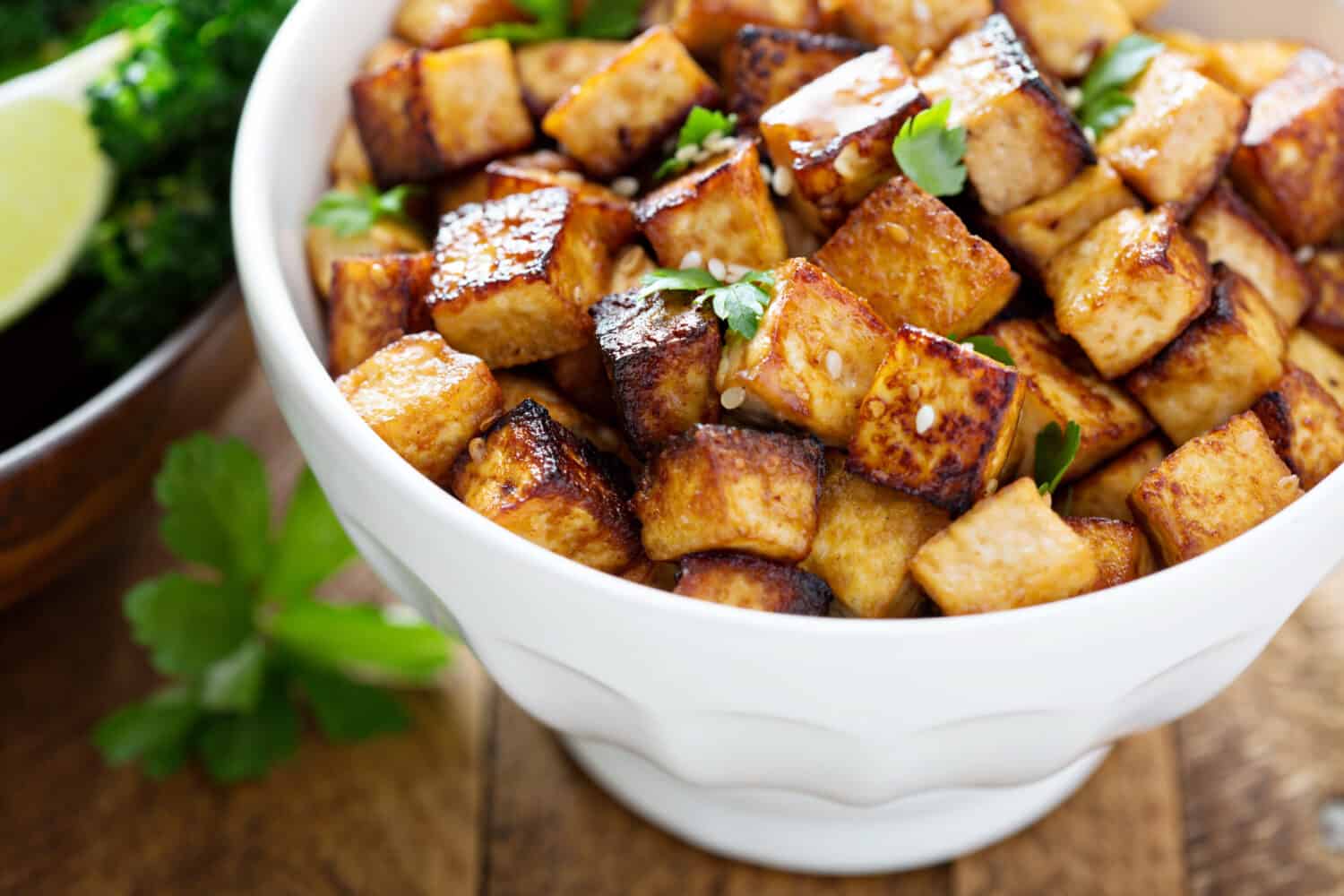When it comes to meat and protein alternatives, the option of tempeh vs. tofu is a classic debate. Both soy-based products are versatile and nutritious. The significant differences between tempeh vs. tofu come down to their appearance, flavor, consistency, and nutritional profiles. While tempeh is a compressed patty of fermented soybeans, tofu comes from soybean milk that has been pressed and processed. Tofu comes in three consistencies, including, firm, soft, and silken. If you’re looking for plant-based protein options, both of these are great. Either way, it’s good to understand their differences so you know which will be best for certain recipes.
In this post, we’ll discuss the significant differences between tempeh vs. tofu and how they impact cooking with either. You’ll learn more about their nutritional profiles, and if one is potentially healthier than another. By the end of this, you’ll be armed with all the facts in the great debate of tempeh vs. tofu. Happy reading, and happy plant-based eating!
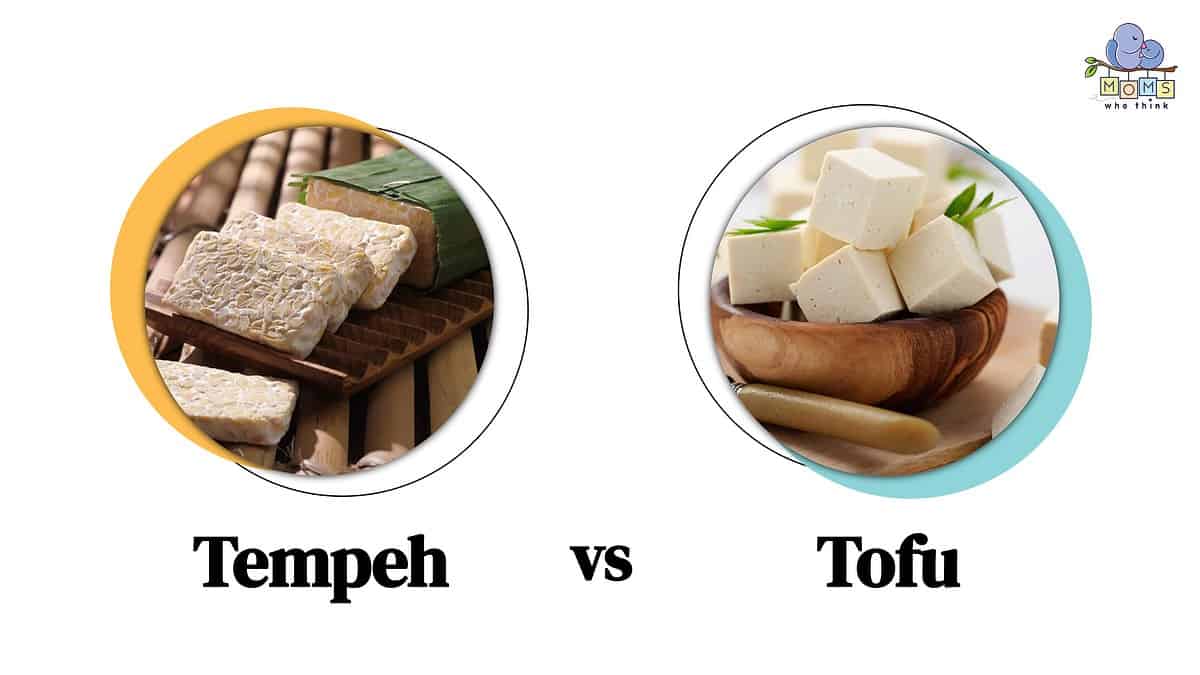
Tempeh vs. Tofu: What Is The Difference?
As we mentioned briefly above, there are four main differences between tempeh vs. tofu. It comes down to their consistency, appearance, flavor, and overall nutritional content. The two go through different creation processes and have different nutritional profiles. For instance, while both are soy-based, tempeh is made from soybeans. Tofu, on the other hand, is made from soybean milk that coagulates (via Brittanica). Let's get more into the details.
What is Tempeh?
Tempeh is a product of either fresh or cooked soybeans that are fermented to form a paste. The solid form of this paste can be used as a meat alternative in all kinds of recipes for added plant protein. It has 9 amino acids, all of which are great for you. Tempeh can be made from other plant-based ingredients like millet, brown rice, and barley. With a slightly nutty flavor and a grainy consistency, tempeh is great for soaking up other flavors it's cooked with. This is part of why it's so versatile (via The Food Network).
History And Origin of Tempeh
The origins of tempeh can be traced some 400 years. It originated in the Tembayat Village, on the island of Java, in Indonesia. However, it may be as old as a thousand years! The first written mention of tempeh is recorded in the 1814 Serat Centhini, a twelve-volume compilation of Javanese tales (via Google Arts & Culture). Tempeh is integral to numerous traditional dishes that use raw, fried, and over-fermented tempeh to augment and embolden other flavors. Plant-based, vegan, and full of protein, it's no wonder this has been a superfood for as long as it has. But how exactly is it made?
How is Tempeh Made?
As we've discussed, tempeh typically comes from the fermentation of soybeans. However, it can be made with other legumes and grains. These variations impact the taste, but not the overall texture or flavor-sponge quality of the tempeh type. To make the pressed soybean cakes, first, the soybeans (either fresh or cooked) are soaked in water overnight. Next, they are skinned and then compressed in either a plastic bag or the more traditional packaging of the banana leaf. They are left in a humid environment where the pressed soybeans will quickly ferment. From here, they can be refrigerated or frozen for later use (via Brittanica).
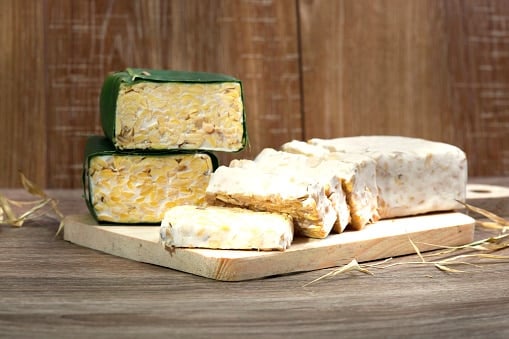
©JOKO SL/ via Getty Images
The fungus that ferments the soybeans is known as Rhizopus oligosporus. It is naturally occurring in the Javanese hibiscus plant and on teak leaves. It can also be purchased in starter form. The fermentation process involves the soybeans and the fungus combining to form the soybean cake. The resulting white appearance of the fermented bean cakes is this combination process. Pasteurized tempeh is available for purchase, It will appear more beige and has a more subtle taste than the raw tempeh forms. This is because some of the bacteria have been neutralized by heat in the process of fermentation (via Bon Appétit).
Popular Uses For Tempeh
There are several ways to cook tempeh. Tempeh can be pan-seared, cooked alongside spices to mimic meat in a sandwich or scramble, and it is commonly used in curries as an added protein source. The Food Network recommends a pea-seared recipe with peanut sauce, tempeh fritters, tempeh BLT, or a sweet and sour tempeh dish. Most recipes with meat can be substituted for tempeh, and with the right spices or marinade, it makes for a great substitute.
What is Tofu?
Tofu is also called bean curd. It is made from dried soybeans that are soaked, crushed, and further fermented. Salt coagulants are added to help form a more solid whey which is then poured into molds and packaged into soybean cakes, or tofu. There are multiple types of tofu consistencies, depending on the process. These include soft, silken, and firm.
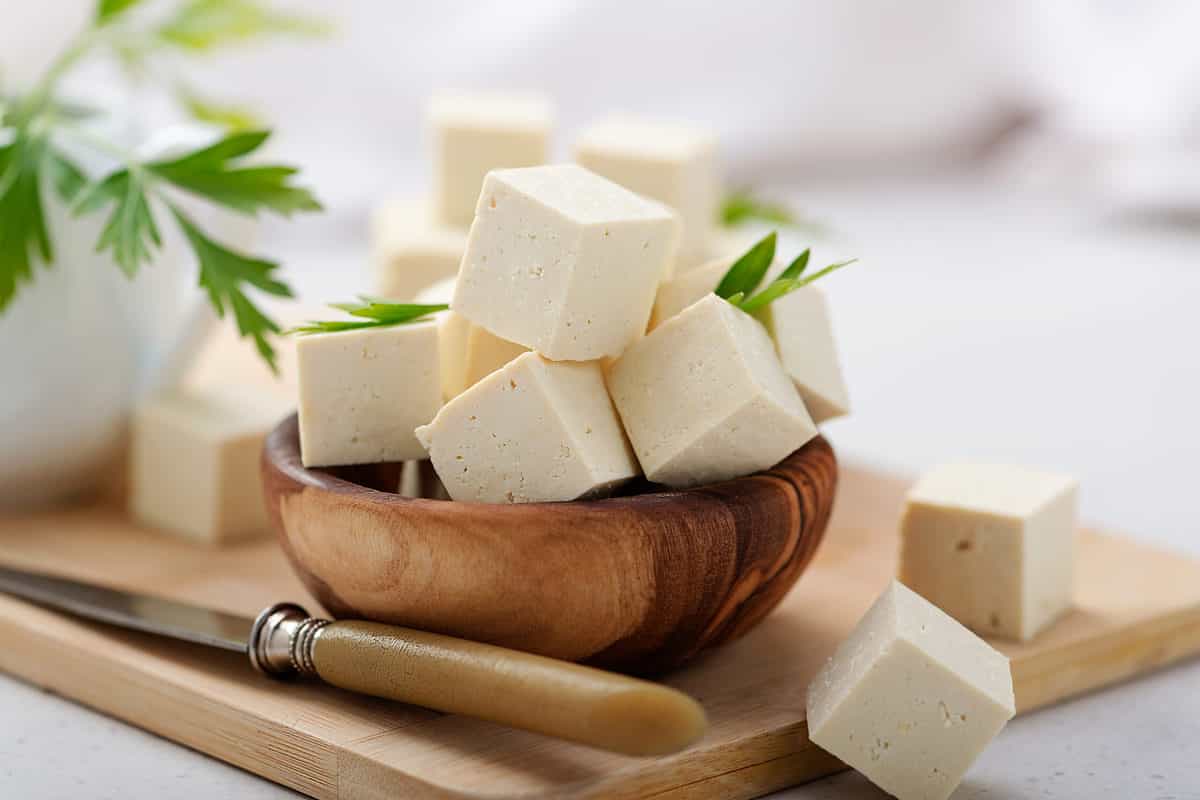
©nelea33/Shutterstock.com
History and Origin of Tofu
Evidence suggests that tofu originated in China. The earliest written mention of tofu dates to 950 AD, and there are quite a few theories regarding its true origins. Some attribute its invention to the King of Huai-Nan, a man named Liu An. Other theories suggest its invention was an accident, some pureed soybean soup mixed with salt and left to form curds and whey. According to The Soy Info Center, “The Mongolian Import Theory” speculates that the process was modeled after cheese-making processes from Mongolian tribes along the border of Northern China. Either way, it is clear that tofu has been a staple food in many traditions, and has been made for thousands of years.
How is Tofu Made?
Dried soybeans get soaked in water before being crushed up and then boiled. Once the mixture is cooled, it can be separated into the pulp from the crushing step, and the milky water residue. The next step is to add salt coagulants to speed up the solidification of the curds. Calcium, magnesium chloride, sulfates, and other citric acids are examples of added coagulants. Next, this mixture is poured into molds where the remaining whey water drains off, leaving behind the soybean cakes which are pressed, preserved in water, and sometimes dried (via Brittanica).
Popular Uses For Tofu
Tofu, like tempeh, can take on the flavors that it's cooked with. It is a great protein source in stir-fries and scrambles. It can be air-fried with spices and vegetables, or marinated and baked to be used in sandwiches, curries, soups, and stews. Bread it like chicken katsu and serve it over rice, or eat it raw with chopped green onion, chili oil, and soy sauce (via Delish). Check out the great recipe for Fried Rice with Scallions, Edamame, and Tofu on our website.
Nutritional Value of Tempeh vs. Tofu
As you can see, there are some nutritional differences between tempeh vs. tofu, perhaps the biggest being their calorie and protein counts. The way in which these foods are processed influences the overall nutritional profile of soy-based foods, so that's good to keep in mind when using either.
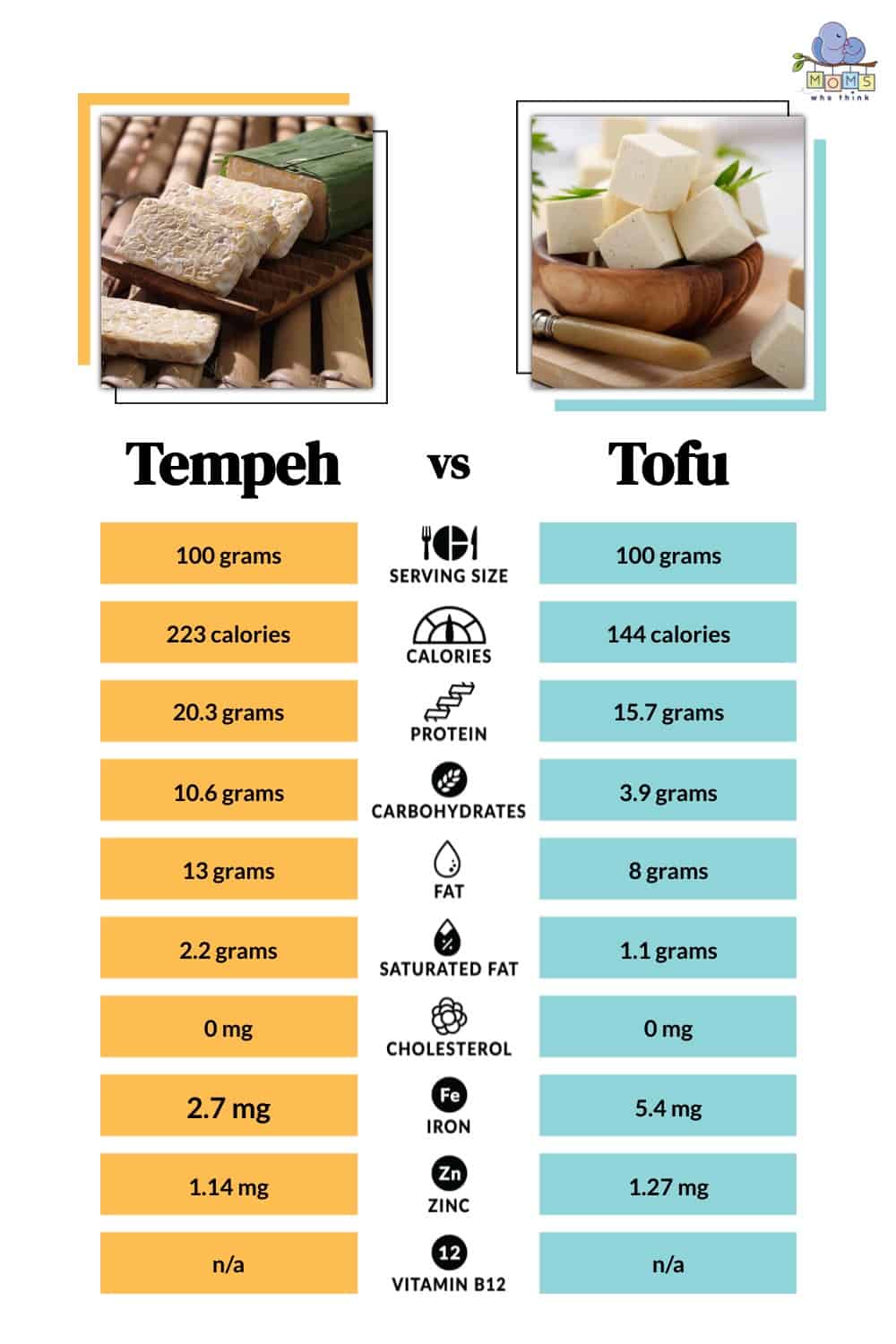
Tempeh vs. Tofu: Which One is Healthier?
Overall, the two are both quite healthy. When it comes down to things such as fiber content, iron content, and protein, tempeh packs more of a punch than tofu. Tofu can be more processed than tempeh, which, if unpasteurized, is truly fermented soybeans that have been pressed into a soybean cake. Tofu is still quite nutritious however, it lacks the whole soybean due to the grinding and pressing before it becomes the coagulated soybean milk that then is packaged as tofu. The whole soybean provides lots of vitamins and essential amino acids that can be super beneficial. Therefore, in some senses, tempeh is healthier for you than tofu.
Possible Alternatives To Tempeh or Tofu
One alternative to tempeh and tofu is seitan, which is made from gluten flour. There are also lentils, chickpeas, and jackfruit, all of which can be processed similarly to tempeh. Jackfruit, for instance, has a green, spiky exterior, but its insides are fleshy, yellow, and similar, in consistency to a pineapple. When dried, or cooked, jackfruit gets compared to pulled pork meat. Like tempeh and tofu, it does a great job of soaking up the surrounding flavors when it is cooked as a substitute in recipes involving meat.
A Quick Comparison of Tempeh vs. Tofu
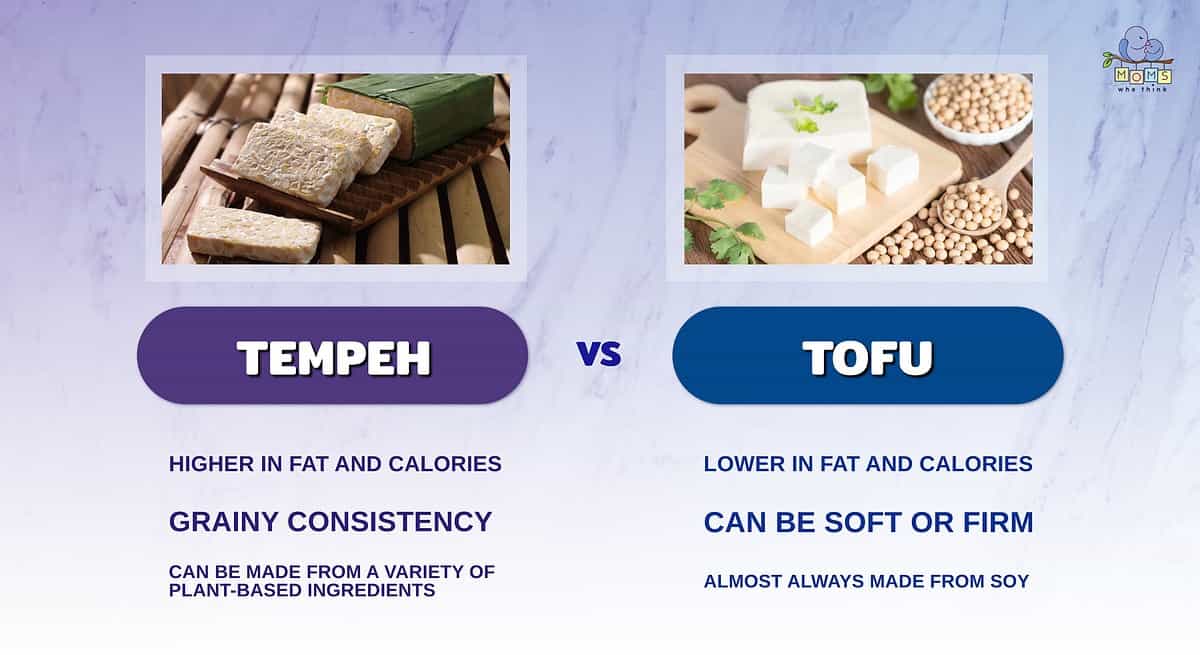
One important thing to note is that tempeh is higher in fat and calories compared to tofu. The difference is important for anyone who is dieting; if that's you, going with tofu is likely the better choice. Tempeh has a grainy consistency, while tofu's consistency can vary from soft to firm depending on how it's made. While tempeh is often made with soy, it can be made from a variety of plant-based ingredients. Tofu, on the other hand, is almost always made with soy.
Print
Cashew Crunch Recipe
- Yield: 2 entrees, 4 servings each 1x
Ingredients
- 6 tablespoons soy sauce
- 1/4 cup oyster sauce
- 4 teaspoons sesame oil
- 1/4 cup water
- 1 1/2 teaspoons sugar
- 1/4 cup canola oil
- 2 carrots peeled, julienned
- 4 cups broccoli
- 1 package (14 ounces) extra-firm tofu, cut into cubes
- 4 garlic cloves, minced
- 3 teaspoons bottled minced ginger
- 1/2 of 13.25-ounces package whole wheat rotini
Supplies:
- 2 one–gallon freezer bags, labeled
Instructions
- Bring 5 cups water mixed with 1 tablespoon salt to boil in a large stockpot. Pour in dry rotini and cook until pasta is al dente.
- Meanwhile, combine soy sauce, oyster sauce, sesame oil, water, and sugar in a small bowl.
- Heat 4 tablespoons canola oil in a large skillet. Stir-fry carrots and broccoli for 2 minutes. Add cubed tofu; stir-fry for 4 minutes. Add garlic and ginger and cook for 1 minute. Add sauce mixture. Stir to coat.
- Divide mixture in half. Place first half over noodles and stir to coat. Top with cashews just before serving. Place second half in 1 one-gallon freezer bag and freeze.
To Serve:
- Defrost in refrigerator and reheat in microwave. Top with roasted cashews, serve warm.
Freeze up to: 4 months
The image featured at the top of this post is ©Elena Veselova/Shutterstock.com.
